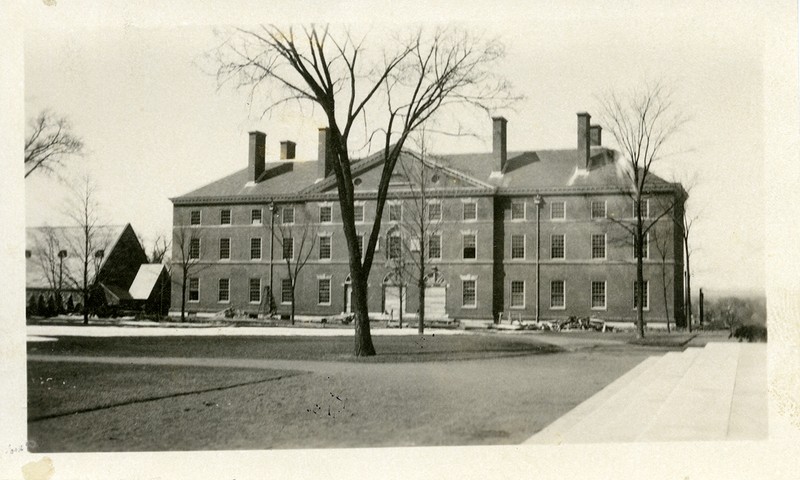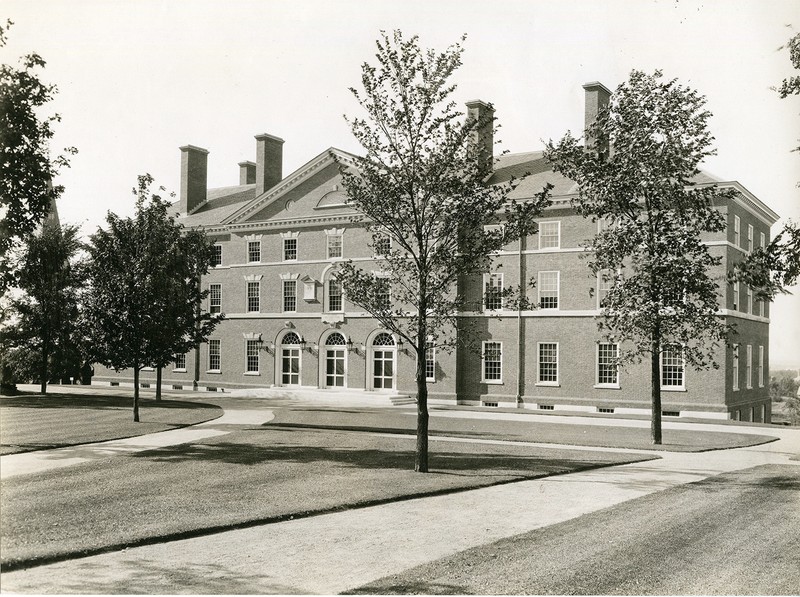George Washington Hall, 1925-1926, at Phillips Academy
Introduction
Text-to-speech Audio
Images
George Washington Hall, June 1926

George Washington Hall, 1930s

George Washington Hall, 1928. Photograph by George H. Davis. (Foxcroft Hall at left)

George Washington Hall interior, 1927. Photograph by Peter A. Juley and son.

Backstory and Context
Text-to-speech Audio
Architect Charles Platt's plan for the east side of Main Street incorporated the Andover Theological Seminary campus as core of the new development. Platt's plan required moving Bulfinch's central seminary building, Pearson Hall. It was lifted from between Foxcroft and Bartlet, moved back and to the south and turned ninety degrees to rest at right angles behind Bartlet. This was the first step in creating a rectilinear quadrangle on the crest of the seminary hill, allowing the new administration building, George Washington Hall, to stand to the rear and center of the quad. As would be the case in each of the buildings designed by Platt, the restrained version of the neocolonial style by Platt stood in direct contrast to Lowell's more elaborate interpretations of the same style.
Sources
Academy Hill: The Andover Campus, 1778 to the Present. New York: Princeton Architectural Press, 2000.
Allis, Frederick S., Jr. Youth From Every Quarter: A Bicentennial History of Phillips Academy, Andover. Hanover, NH: University Press of New England, 1979.
Domingue, Robert A. Phillips Academy Andover, Massachusetts: An Illustrated History of the Property (including Abbot Academy). Wilmington, Mass.: Hampshire Press, 1990.
Montgomery, Susan J. and Roger G. Reed. Phillips Academy Andover: An Architectural Tour. New York: Princeton University Press, 2000.
Phillips Academy Archives and Special Collections
